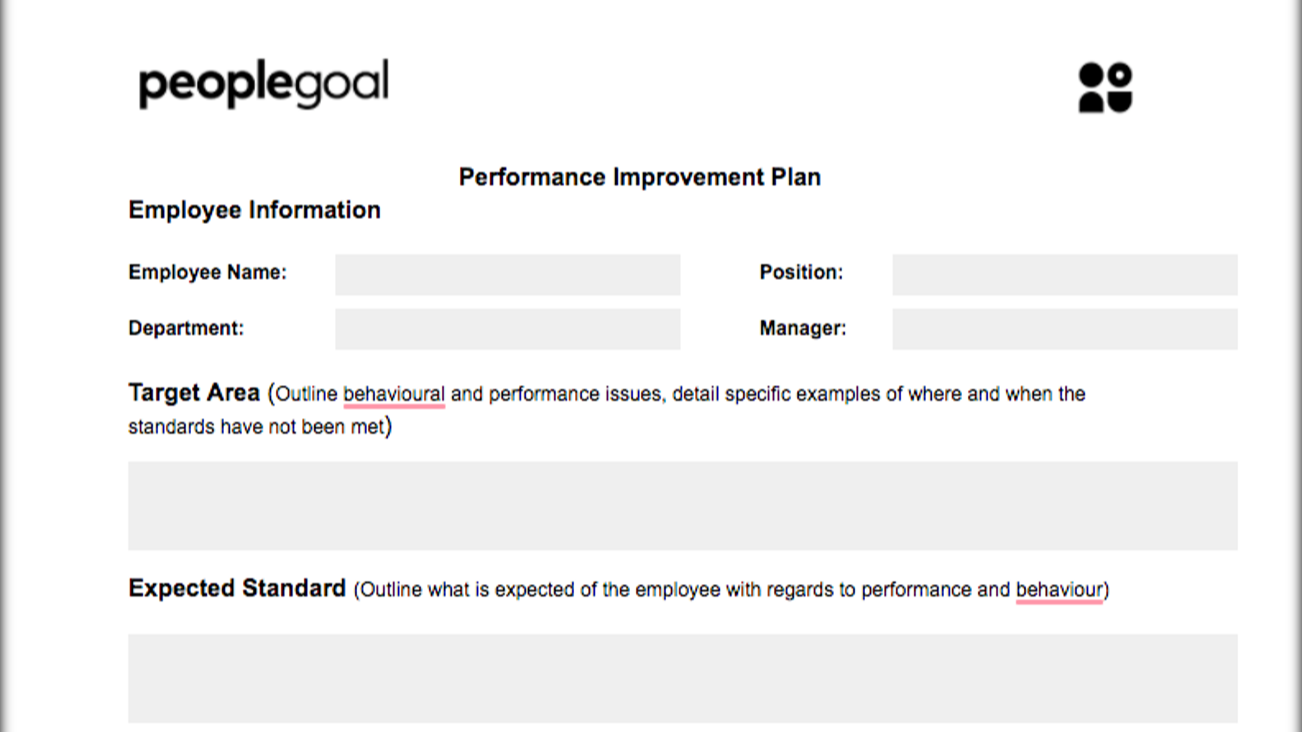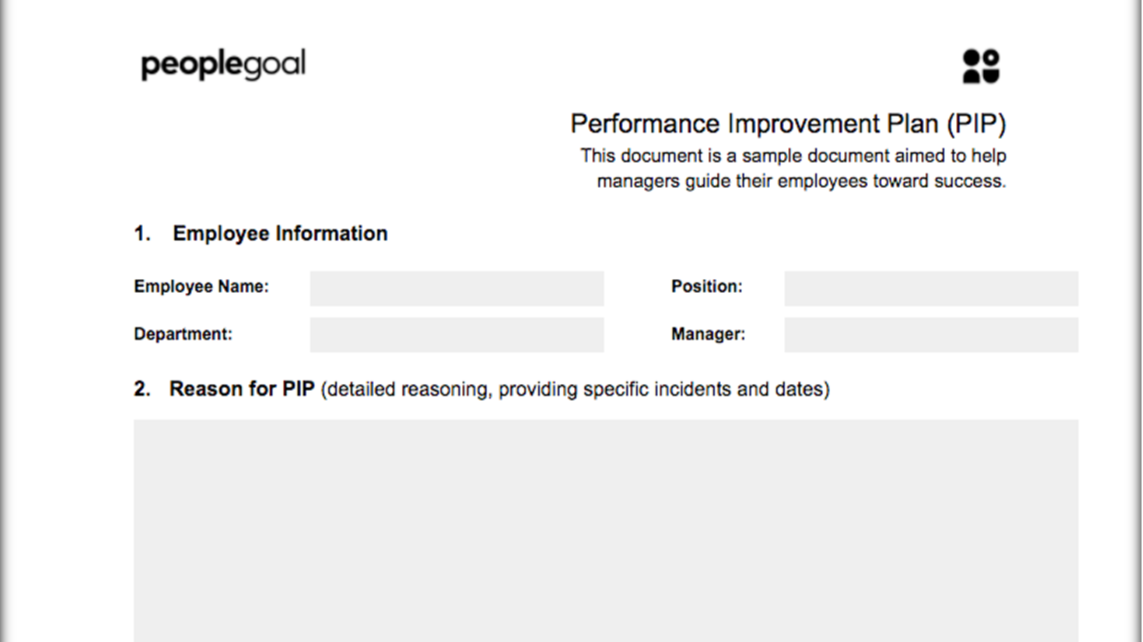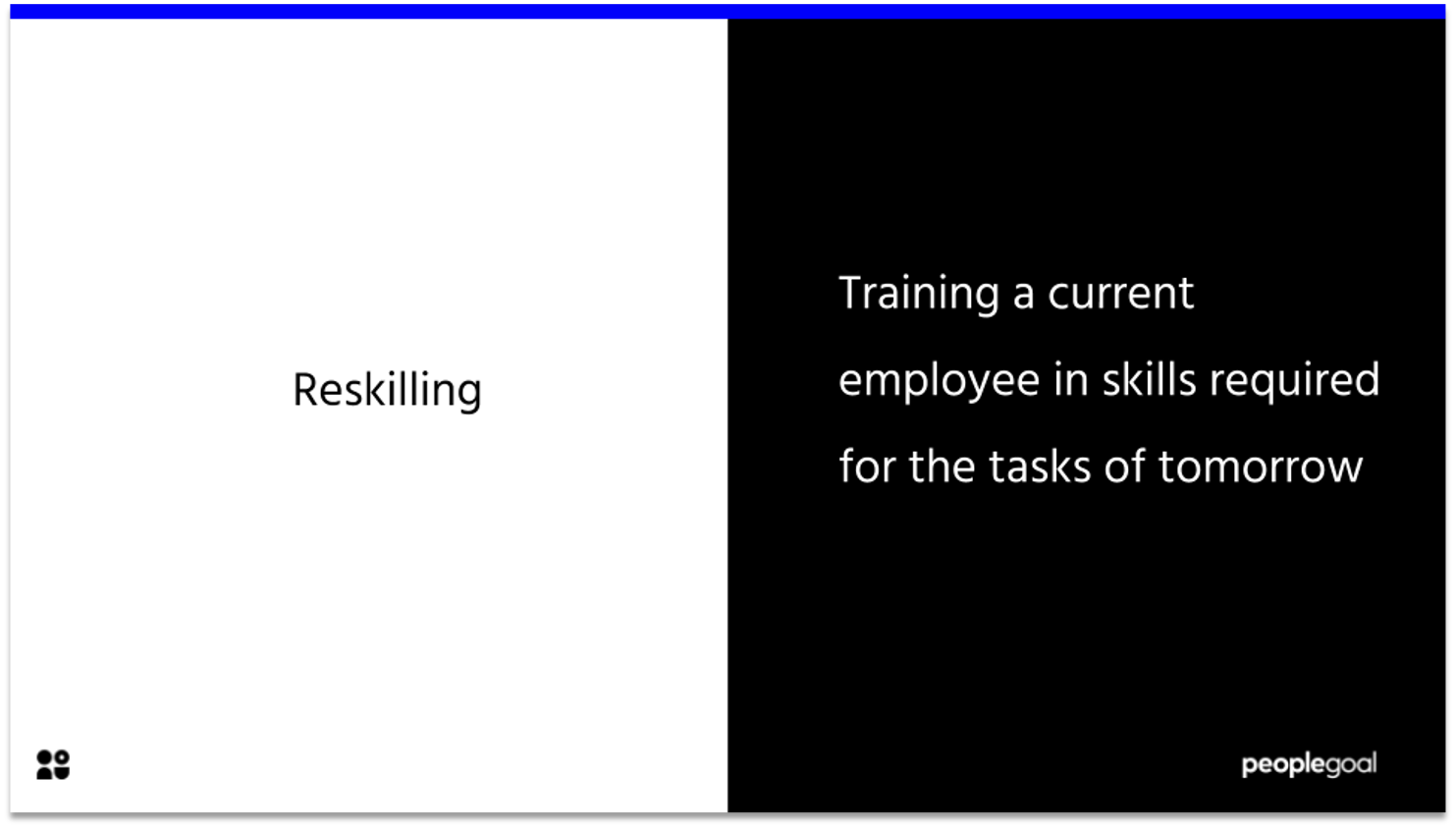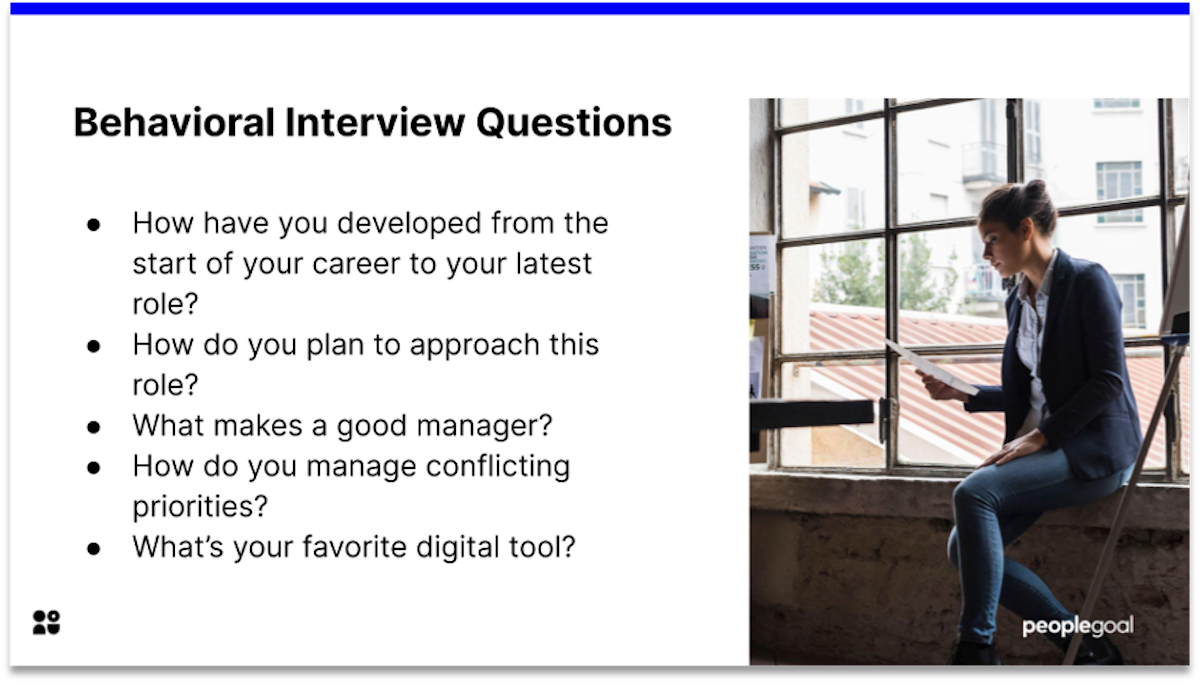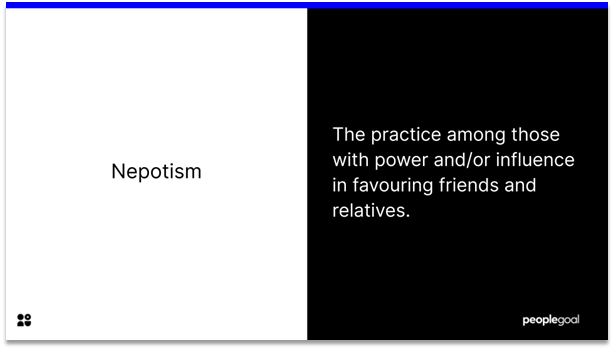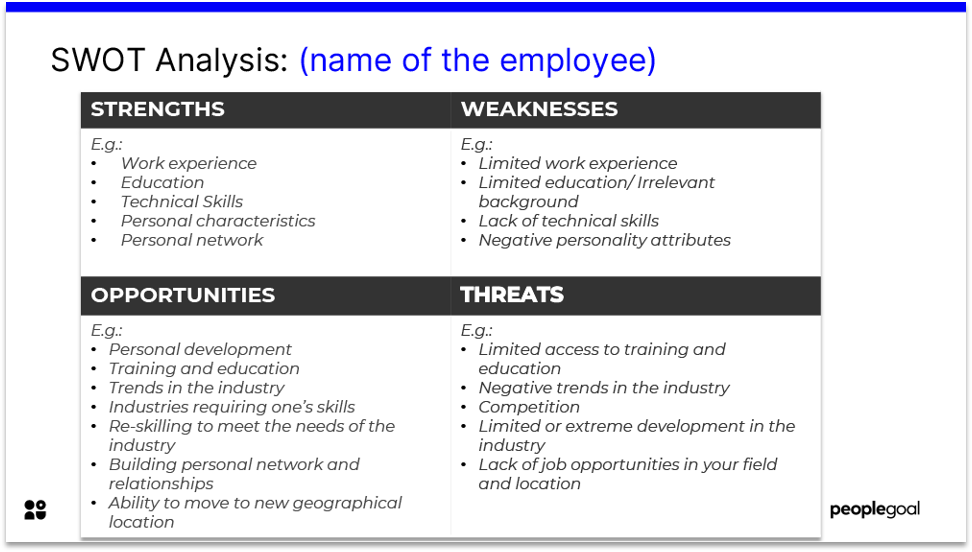An Employee Performance Improvement Plan (PIP) is a formal document expressing any continuous or recurring behavioral and performance issues as well as planning attainable goals for a given employee. The employee PIP usually outlines a specific timeline for the employee to regain a level of standing at the organization.
How to use an Employee Performance Improvement Plan?
An Employee Performance Improvement Plan is used to help employees meet goals which they may be struggling to meet, as well as attempting to curb maladaptive behaviors. At a reduced level, an employee PIP can be viewed as a probationary period for employees – with many people regarding an employee PIP as the initial stages of dismissing an employee. This may be the case in some situations, but PIPs can be beneficial for both the employee and the company. In many cases a PIP signals that the company wants to keep the employee. It is a structured approach targeting improvement through talent management strategy and formal documentation.
Management will work with the employee to design a plan, and attempt to facilitate discussion to discern the exact areas for improvement. In all cases, managers and HR representatives should continuously review the plan. Performance reviews are an essential element to ongoing employee development and reviews within the PIP spectrum are no different. This will help to ensure that employees are adhering to the outlined plan and that the treatment of employees who are on a PIP is fair. The manager should continuously monitor and provide the employee with feedback regarding their work performance, and if needed may take further disciplinary action.
The ultimate goal of an Employee Improvement Plan should always be to find a solution for both the employee, their professional development and the organization. Clear communication between the manager and the team member allows for a more effective PIP.
When should you implement an Employee Performance Improvement Plan?
Employee Performance Improvement Plans are best implemented when an employee is struggling. Managers should be able to pick up on signs of an underperforming employee. Some of the signs that may suggest an employee is struggling are: decreased productivity; decreased engagement, those who are taking more time off or are becoming unpunctual. The beginning of the process should happen when there is a clear trend of negative performance.
Other reasons why you may implement a Performance Improvement Plan include:
- During an employees’ probationary period with the company.
- If an employee has traditionally been a good employee but has been showing a recent anomalous trend in poor performance.
- If an employee is showing poor performance in a small number of areas, but shows high performance in most other areas.
- When your employee handbook does not have a proper strategy for performance improvement, the PIP offers a viable alternative.
- When an employee is experiencing personal problems which may have affected their performance recently.
What are the benefits of an Employee Performance Improvement Plan?
There are a number of benefits, namely: engaging employees by providing them with the power to change their performance and behaviors; provides employees with detailed feedback and specific areas for improvement and shows the employee that the organization recognizes individuals’ current challenges. Further, having a PIP process in place, the potential risk of litigation is reduced if performance does not improve and dismissal occurs. Employee development is essential for the success of your organization.
How can you improve the effectiveness of an Employee Performance Improvement Plan?
1. Set Clear Goals
Providing clarity achieves the employee to have total understanding of what their objectives and goals are. Conversely, not providing clarity will lead to the employee asking more and more questions as well as heightening their confusion. Employees need to understand what their specific objectives and goals are. The more precise the goals are, the easier completing them should be.
2. Communication
The employee Performance Improvement Plan is a collaborative process. Employees and managers alike should be able to talk freely about their current difficulties as well as how they plan to achieve the superordinate goals. Employees may become disengaged and act with malevolence towards the plan. As a manager make sure you provide clarity to the employee concerning your expectations. As an employee keep in contact with manager in order to follow the PIP as effectively as possible.
3. Regular check-ins
Almost as an antecedent from the previous point, regular check-ins are particularly important in improving the effectiveness of an improvement plan. Regular check-ins provide structure, but more importantly they provide a consistent direction, preventing employees from going off track.
4. Root Causes
Perhaps there is an underlying root cause associated with the negative trend in their job performance. Have they recently undergone a family bereavement or other personal issues? Is there something troubling them in their professional life – do they want greater challenges? Try and talk through any potential issues that the employee may have with honesty and respect. Discuss whether they feel it is getting in the way of their performance, and discuss how best to deal with it.
5. Positivity
Although the employee is on an Employee Performance Improvement Plan due to a need for improvement, there is almost always going to be positive aspects. Convey to the employee that they are a valuable member of the company. Emphasize the positive sides of their employment. No one wants to be told that they are bad at their job, and being placed on a PIP it is inevitable that this thought may cross their mind.
6. Structure
We have talked about structure above and it is almost an overarching theme in Employee Performance Improvement Plans. Perhaps the most important element of structure is creating a timeline of what you (as the manager) expects from the process. Organize regular check-ins as well as formal meetings with the employee and track their performance. Provide employees with a pre-defined structure as to what you expected and within a given time frame.
7. Provide extra support and/or training
Don’t let the employee struggle on their own! A good tactic to improve the effectiveness of your PIP is to provide extra support. Harking back to point four: root causes – it is important to recognize that the result of poor performance may have been caused by a lack of training. If an employee has gone through a poor onboarding process with minimal support, they may struggle when given tasks with real responsibility. Moreover, if an employee receives a promotion or greater workload without the pre-requisite training then they are often going to struggle which will reflect poorly on their performance.
Once you have identified a skill gap using a skill gap analysis, decide how best to bridge it. Think about formal courses, job shadowing a colleague or assigning the employee a mentor to develop job specific or soft skills.
8. Clarity in consequences
The aforementioned elements to making an effective Employee Performance Improvement Plan take a relatively positive outlook – and this is important! But it is also important to make sure the employee knows that there are clear consequences if performance doesn’t improve. There needs to be pre-defined, clear and transparent consequences outlined at the beginning of the PIP process.
Hopefully following these guidelines, you will have a successful PIP. It is important for the manager to remain somewhat vigilant. To make sure that your plan is effective, you cannot let the employee slip back into their old bad habits after a couple of months. Make sure to have routine check-ins, track their performance and have regular discussions about where and how they think they have improved (providing an element of positive reinforcement to the overall Performance Improvement Plan process).
Employee Performance Improvement Plan Samples
We have created two Employee Performance Improvement Plans templates which you can download for your organization.
There’s a number of key, underlying themes in a PIP and in the sample PIP’s provided. You may wish to include these topic areas:
Sample 1
In this example we have included the following categories:
Employee Information – Information outlining who the employee is, what their role is and who their manager is.
Target Area – Outline behavioral and performance issues, detail specific examples of where and when standards have not been met.
Expected Standard – Outline what is expected of the employee with regards to performance and behavior.
Improvement Actions – Detail what actions need to be taken in order to meet the required level of performance.
Training and Support – agree upon what training and support the employee may need to improve their performance.
Check-in and reviews – schedule periodic meetings to track performance and discuss strenghts and weaknesses and potential barriers.
Final Review – in specific detail, log any improvements made in the target area. Document any instances of unacceptable or exemplary behavior, be as detailed as possible. Record quantifiably if the incident is re-occurring. Substantiate your evidence by attaching any physical documentation.
Acknowledgement – an acknowledgement from the employee, recognizing that they are being placed on a PIP. The employee acknowledges that failure to meet and sustain the required level may result in further disciplinary action.
You can access them here:
Sample 2:
Employee Information – Information outlining who the employee is, what their role is and who their manager is.
Reason for PIP – give detailed reasoning, providing specific incidents and dates about where standards have not been met.
Expected Behavior/Performance Change – what is expected, the given timeframe, training and support requirements and any additional information.
Check-ins – schedule regular dates to log and track any behavior/ performance change
Route for improvement – Recognize whether the employee needs support. This may come in the form of training, workshops or a dedicated mentor.
Check-ins & Final Review – Schedule regular meetings to track positive or negative change. At the end of the scheduled plan, dedicate a meeting for an in-depth review of the employee’s performance.
Acknowledgement – an acknowledgement –not an agreement- from the employee, recognising that they are being placed on a PIP and the reasons why. Further acknowledging that failure to meet and sustain the required level may result in further disciplinary action
Performance Improvement Plan Popular Questions & Answers
How long should a performance improvement plan last?
This is up to you and it should be based upon existing variables. How serious is this process? How much do you want to change a specific issue? How long will it take the person to adapt? Is it more than one issue? Ask yourselves these questions and the ones which apply to the situation. This being said, PIPs usually last 30, 60 or 90 days.
Can I refuse to sign a performance improvement plan?
You can refuse to sign your performance improvement plan. But there are a number of reasons why you SHOULD sign it. The most prominent of which is that you can actually be fired for refusing to sign. Your employer may even be able to avoid liability if you do not sign. A PIP is not necessarily one stage in your removal; in fact, a PIP should be utilised as a technique to improve YOU.
Does a PIP mean you will be fired?
This is a common thought. No, a proper, structured and well-executed PIP is a not an adverse employment action. It is geared to improve your performance and skills and help you to become a model employee.
How do you respond to a PIP?
It is understandable to be disappointed upon hearing you are being placed on a PIP. Try and respond proactively. Decide if you want to remain at the organization. Ask for help and support. Try and boost your productivity levels. Maintain a positive outlook. Become a model employee and beat the PIP.
Can a performance improvement plan be extended?
PIPs can be extended. PIPs should not be extended longer than 90 days. PIPs can be extended if the data required to support a decision is not available.
How do you write a PIP performance improvement plan?
There are a number of things to include in your PIP. I couldn’t recommend more using our sample PIP, then adapting the questions and processes to fit with your strategy. Nonetheless, the approach you should take follow:
- Identify the performance/behavior that needs improving.
- Provide specific examples for reasoning.
- Outline expected standard.
- Identify training and support.
- Schedule check-ins and review points.
- Sign and acknowledge.
How do you correct an employee with a weak performance?
Alongside a PIP, there are a number of ways to correct weak performance:
- Identify barriers to success.
- Identify deficits in knowledge or skills.
- Provide education, training or mentoring.
- Proper feedback processes.
- One-on-one meetings and proper communication networks concerning performance.
How do you deliver poor performance feedback?
Delivering poor performance is not a one-time thing. It is a continuous job. You need to provide specific examples, and you need to document progress. Organize a meeting with the employee. Make sure to provide details on their strengths as well as their weaknesses. Create an action plan for improvement – not necessarily a PIP. Discuss performance improve areas and identify how to help, i.e. education, training and mentoring. Set up a review timeline and schedule meetings.
What are some common performance issues?
Some of the most common performance issues include:
- Continuously missing deadlines
- Motivational deficits
- Excessive sick leave
- Low productivity
- Poor professionalism
- Absenteeism
- Tardiness
- Wasteful of resources
- Inaccurate or poor work
- Client dissatisfaction
- Continuous failure to meet expectations
Ready to 3x Your Teams' Performance?
Use the best performance management software to align goals, track progress, and boost employee engagement.
